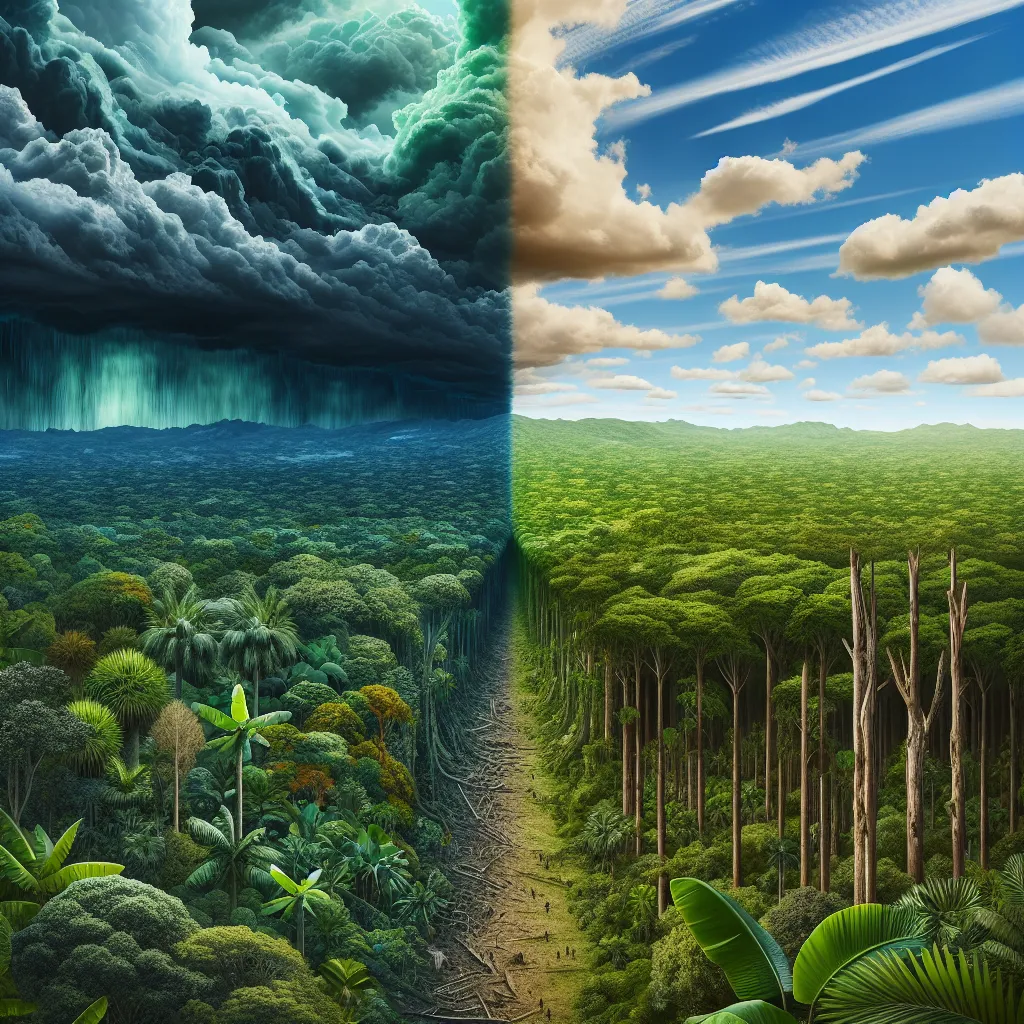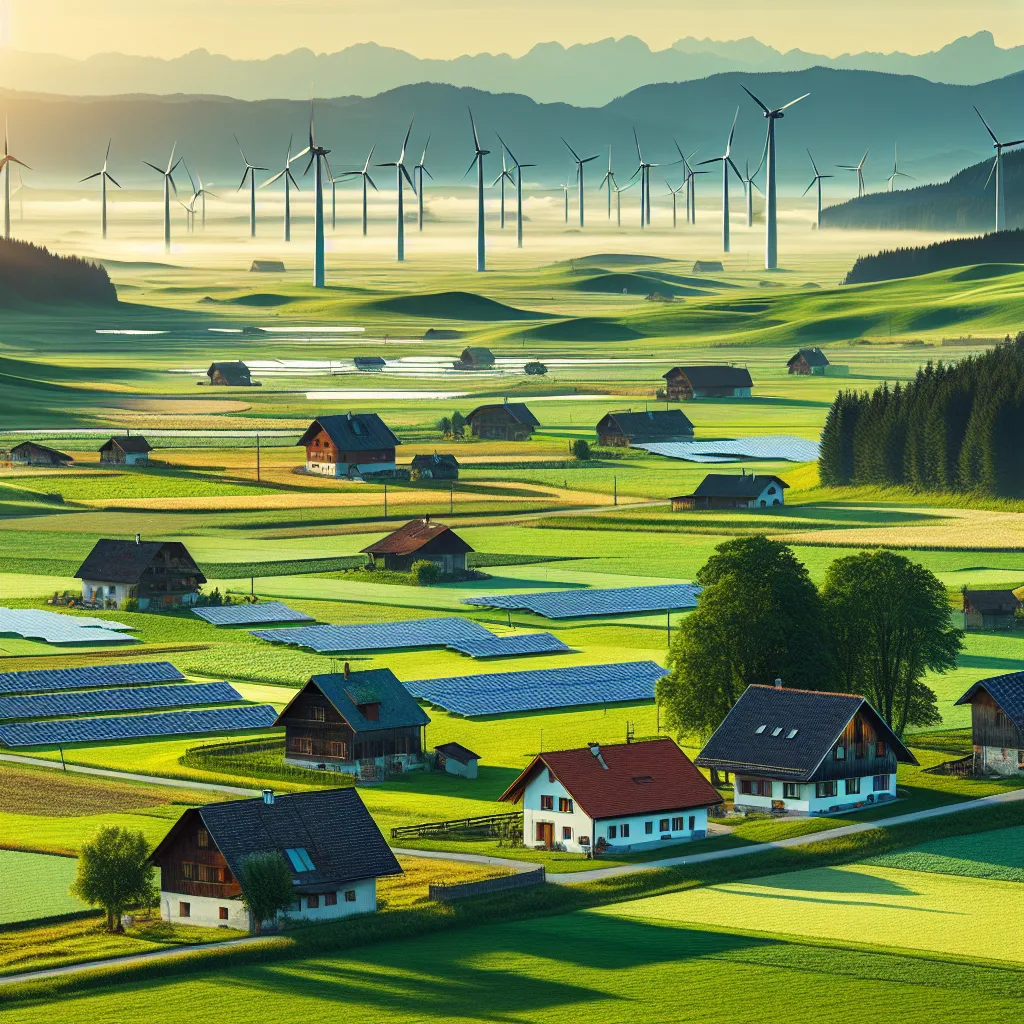As an experienced IELTS instructor, I’m excited to share with you a comprehensive IELTS Reading practice test focused on the critical topic of climate change and its impact on tropical rainforests. This practice material will help you sharpen your reading skills while learning about an important environmental issue.
 Climate change affecting tropical rainforest
Climate change affecting tropical rainforest
Introduction
Climate change is one of the most pressing issues of our time, and its effects are far-reaching, impacting ecosystems across the globe. Tropical rainforests, often called the “lungs of the Earth,” are particularly vulnerable to these changes. In this IELTS Reading practice, we’ll explore how climate change is affecting tropical rainforests through three passages of increasing difficulty.
IELTS Reading Test: Climate Change and Tropical Rainforests
Passage 1 (Easy Text)
The Importance of Tropical Rainforests
Tropical rainforests are some of the most diverse and important ecosystems on our planet. They cover less than 10% of Earth’s land surface but are home to more than half of the world’s plant and animal species. These lush forests play a crucial role in regulating the global climate by absorbing carbon dioxide and releasing oxygen.
Rainforests also provide essential resources for humans, including food, medicine, and raw materials. Many indigenous communities rely on these forests for their livelihoods and cultural heritage. However, these vital ecosystems are under threat from human activities and climate change.
Climate change is causing significant changes in temperature and rainfall patterns in tropical regions. These changes are affecting the delicate balance of rainforest ecosystems. Increased temperatures and altered precipitation patterns can lead to more frequent droughts, making forests more susceptible to fires. Additionally, changing climatic conditions can disrupt the life cycles of plants and animals, potentially leading to species extinction.
As the climate continues to warm, scientists predict that some rainforest areas may transform into savanna-like ecosystems. This transformation would have far-reaching consequences for biodiversity, carbon storage, and the global climate system. It’s clear that protecting and preserving tropical rainforests is crucial for maintaining the health of our planet.
Questions 1-5
Do the following statements agree with the information given in the passage? Write
TRUE if the statement agrees with the information
FALSE if the statement contradicts the information
NOT GIVEN if there is no information on this
- Tropical rainforests cover more than 10% of the Earth’s land surface.
- Rainforests are important for absorbing carbon dioxide and releasing oxygen.
- Climate change is causing more frequent droughts in tropical regions.
- All rainforest areas will eventually turn into savannas due to climate change.
- Protecting tropical rainforests is important for the Earth’s climate.
Questions 6-10
Complete the sentences below. Choose NO MORE THAN TWO WORDS from the passage for each answer.
- Tropical rainforests are home to more than half of the world’s __ and __ species.
- Many __ communities depend on rainforests for their way of life.
- Climate change is altering both __ and __ patterns in tropical regions.
- Changing climatic conditions can disrupt the __ of plants and animals.
- Some scientists predict that certain rainforest areas may transform into __ ecosystems.
Passage 2 (Medium Text)
Climate Change Impacts on Tropical Rainforest Biodiversity
The intricate web of life in tropical rainforests is being severely impacted by climate change. As global temperatures rise and precipitation patterns shift, many species are struggling to adapt to their rapidly changing environment. This phenomenon is leading to what scientists call “climate-induced biodiversity loss,” a major threat to the ecological balance of these vital ecosystems.
One of the most significant impacts of climate change on rainforest biodiversity is the alteration of species distributions. As temperatures increase, many plants and animals are forced to migrate to higher elevations or latitudes in search of suitable habitats. However, not all species can move quickly enough to keep pace with the changing climate. This is particularly problematic for species with limited dispersal abilities or those that require specific environmental conditions to survive.
Climate change is also disrupting the delicate timing of ecological processes in rainforests. Many species rely on specific seasonal cues for important life cycle events such as flowering, fruiting, or breeding. As temperatures warm and rainfall patterns change, these cues are becoming increasingly unreliable. This phenological mismatch can have cascading effects throughout the ecosystem, disrupting food chains and pollination networks.
The increased frequency and intensity of extreme weather events associated with climate change pose another significant threat to rainforest biodiversity. Severe droughts, for instance, can lead to widespread tree mortality and make forests more susceptible to fires. These disturbances can create opportunities for invasive species to establish themselves, further altering the composition of rainforest communities.
Furthermore, climate change is exacerbating existing threats to rainforest biodiversity, such as habitat fragmentation and degradation. As climatic conditions become less favorable in certain areas, the remaining suitable habitats become even more critical for species survival. However, these refugia are often isolated and may not be large enough to support viable populations in the long term.
Despite these challenges, there is hope for rainforest biodiversity in the face of climate change. Conservation strategies that focus on maintaining and restoring habitat connectivity can help species migrate and adapt to changing conditions. Additionally, protecting large, intact areas of rainforest can provide a buffer against climate impacts and preserve the genetic diversity needed for species to evolve and adapt.
Ultimately, addressing the root causes of climate change through global efforts to reduce greenhouse gas emissions is crucial for safeguarding the future of tropical rainforest biodiversity. By taking action now, we can help ensure that these incredible ecosystems continue to thrive for generations to come.
Questions 11-14
Choose the correct letter, A, B, C, or D.
-
According to the passage, climate-induced biodiversity loss is primarily caused by:
A) Deforestation
B) Rising temperatures and changing precipitation patterns
C) Invasive species
D) Habitat fragmentation -
The term “phenological mismatch” refers to:
A) The inability of species to migrate to new habitats
B) The disruption of seasonal cues for life cycle events
C) The loss of genetic diversity in rainforest species
D) The mismatch between conservation efforts and climate change impacts -
Which of the following is NOT mentioned as a threat to rainforest biodiversity caused by climate change?
A) Altered species distributions
B) Disruption of ecological processes
C) Increased pollution levels
D) More frequent extreme weather events -
The passage suggests that one way to help species adapt to climate change is to:
A) Relocate all species to higher elevations
B) Create artificial environments that mimic rainforest conditions
C) Maintain and restore habitat connectivity
D) Introduce new species to replace those that cannot adapt
Questions 15-19
Complete the summary below. Choose NO MORE THAN TWO WORDS from the passage for each answer.
Climate change is having a significant impact on tropical rainforest biodiversity. As temperatures rise, many species are forced to (15) __ to find suitable habitats. Climate change is also disrupting the (16) __ of ecological processes, which can affect food chains and pollination. Extreme weather events, such as (17) __, can lead to tree mortality and increase the risk of fires. These disturbances create opportunities for (18) __ to establish themselves. To address these challenges, conservation strategies should focus on maintaining habitat connectivity and protecting large, intact areas of rainforest. Ultimately, (19) __ is crucial for safeguarding tropical rainforest biodiversity.
Passage 3 (Hard Text)
The Complex Interactions Between Climate Change and Tropical Rainforest Ecosystems
The relationship between climate change and tropical rainforests is characterized by a complex web of interactions and feedback loops. While rainforests are significantly impacted by climate change, they also play a crucial role in regulating the global climate system. This intricate interplay has far-reaching implications for biodiversity, carbon sequestration, and the future of our planet.
One of the most critical aspects of this relationship is the role of tropical rainforests in the global carbon cycle. These ecosystems act as massive carbon sinks, sequestering vast amounts of carbon dioxide from the atmosphere through photosynthesis. It is estimated that tropical rainforests store approximately 25% of the world’s terrestrial carbon. However, as climate change progresses, the capacity of rainforests to act as carbon sinks may be compromised.
Rising temperatures and altered precipitation patterns associated with climate change can lead to increased tree mortality and reduced forest productivity. This phenomenon, known as “carbon cycle feedback,” could potentially transform rainforests from carbon sinks into carbon sources. As trees die and decompose, they release stored carbon back into the atmosphere, further exacerbating global warming. This positive feedback loop presents a significant challenge in mitigating climate change impacts.
Moreover, climate change is altering the very composition of tropical rainforests. As environmental conditions shift, some plant species may thrive while others struggle to survive. This can lead to changes in forest structure and function, with potential cascading effects throughout the ecosystem. For instance, changes in tree species composition can affect the availability of food and habitat for animals, leading to shifts in faunal communities.
The impact of climate change on tropical rainforests is not uniform across all regions. Some areas may experience increased rainfall, leading to more frequent flooding and soil erosion. In contrast, other regions may face prolonged droughts, increasing the risk of forest fires. These regional variations in climate change impacts add another layer of complexity to conservation efforts and highlight the need for localized adaptation strategies.
Furthermore, the effects of climate change on tropical rainforests are often compounded by other anthropogenic pressures, such as deforestation and habitat fragmentation. These combined stressors can push ecosystems beyond their capacity to adapt, leading to potential tipping points where rainforests transition to alternative, less diverse ecosystem states.
Despite these challenges, tropical rainforests demonstrate remarkable resilience. Many species have evolved mechanisms to cope with environmental variability, which may provide some buffer against climate change impacts. Additionally, the high genetic diversity found in rainforest species offers potential for adaptation to changing conditions.
Understanding and managing the complex interactions between climate change and tropical rainforests requires an interdisciplinary approach. Ecophysiological studies can provide insights into how individual species respond to changing environmental conditions. Remote sensing technologies allow for large-scale monitoring of forest health and carbon stocks. Climate modeling helps predict future scenarios and inform conservation strategies.
Efforts to protect and restore tropical rainforests are crucial not only for preserving biodiversity but also for mitigating global climate change. Reducing Emissions from Deforestation and Forest Degradation (REDD+) programs aim to provide financial incentives for developing countries to protect their forests. These initiatives, combined with sustainable forest management practices and global efforts to reduce greenhouse gas emissions, offer hope for the future of tropical rainforests in a changing climate.
In conclusion, the relationship between climate change and tropical rainforests is characterized by complex feedbacks and interactions. While these ecosystems face significant threats from global warming, they also hold the key to mitigating its impacts. Protecting and restoring tropical rainforests is not just a matter of conservation; it is an essential component of global climate change mitigation strategies.
Questions 20-23
Choose the correct letter, A, B, C, or D.
-
According to the passage, tropical rainforests currently store approximately:
A) 10% of the world’s terrestrial carbon
B) 25% of the world’s terrestrial carbon
C) 50% of the world’s terrestrial carbon
D) 75% of the world’s terrestrial carbon -
The term “carbon cycle feedback” refers to:
A) The process of photosynthesis in rainforest trees
B) The potential for rainforests to become carbon sources instead of sinks
C) The natural cycle of carbon in the atmosphere
D) The feedback loop between deforestation and climate change -
Which of the following is NOT mentioned as a method for studying the interactions between climate change and rainforests?
A) Ecophysiological studies
B) Remote sensing technologies
C) Climate modeling
D) Genetic engineering -
The REDD+ program aims to:
A) Increase deforestation in developing countries
B) Provide financial incentives for forest protection
C) Promote large-scale reforestation projects
D) Develop new technologies for carbon capture
Questions 24-26
Complete the sentences below. Choose NO MORE THAN TWO WORDS from the passage for each answer.
- Climate change can lead to changes in forest structure and function, which may have __ effects throughout the ecosystem.
- The combination of climate change and other human pressures can push ecosystems beyond their capacity to adapt, leading to potential __.
- The high __ found in rainforest species offers potential for adaptation to changing conditions.
Questions 27-30
Do the following statements agree with the information given in the passage? Write
YES if the statement agrees with the views of the writer
NO if the statement contradicts the views of the writer
NOT GIVEN if it is impossible to say what the writer thinks about this
- The impact of climate change on tropical rainforests is uniform across all regions.
- Tropical rainforest species have no mechanisms to cope with environmental variability.
- Protecting tropical rainforests is important only for preserving biodiversity.
- An interdisciplinary approach is necessary to understand and manage the interactions between climate change and tropical rainforests.
Answer Key
Passage 1
- FALSE
- TRUE
- TRUE
- NOT GIVEN
- TRUE
- plant, animal
- indigenous
- temperature, rainfall
- life cycles
- savanna-like
Passage 2
- B
- B
- C
- C
- migrate
- timing
- severe droughts
- invasive species
- reducing greenhouse gas emissions
Passage 3
- B
- B
- D
- B
- cascading
- tipping points
- genetic diversity
- NO
- NO
- NO
- YES
Conclusion
This IELTS Reading practice test on “How Climate Change is Affecting Tropical Rainforests” provides a comprehensive overview of this crucial environmental issue. By working through these passages and questions, you’ve not only improved your reading skills but also gained valuable knowledge about the complex interactions between climate change and rainforest ecosystems.
Remember, success in the IELTS Reading test requires both strong comprehension skills and effective time management. Practice regularly with diverse topics to build your vocabulary and improve your reading speed. For more IELTS practice materials and tips, check out our related articles on how global warming is affecting coral reef ecosystems and the impact of climate change on global biodiversity.
Keep studying, stay motivated, and good luck with your IELTS preparation!


